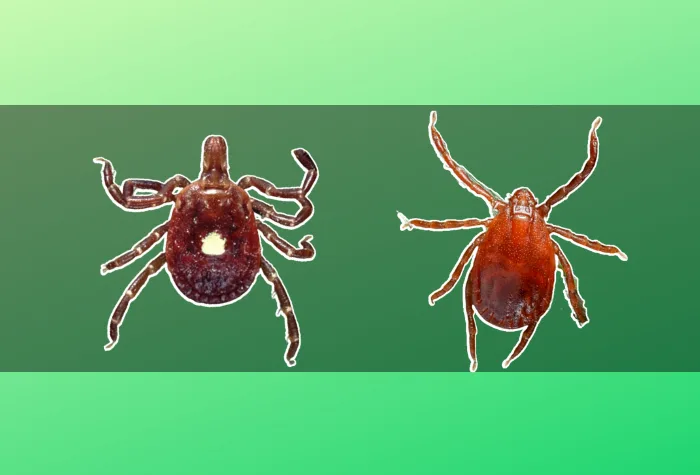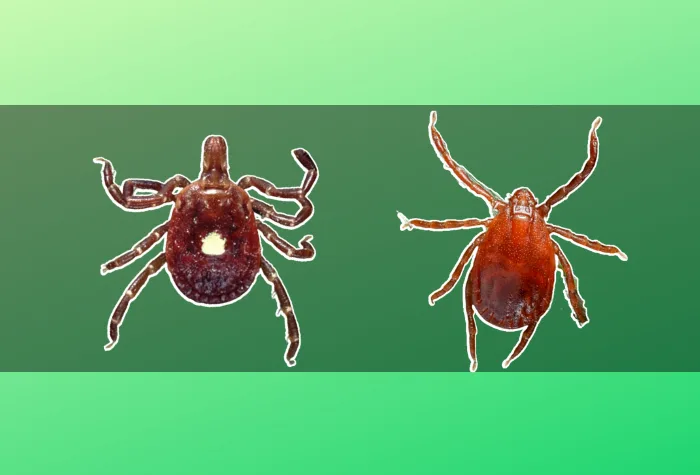
Meet the lone star & Asian longhorned ticks: 2 species inching towards E. Canada
You've seen the headlines over the years - even here at The Weather Network.
Ticks - they seem to be everywhere nowadays, and the illnesses they cause are becoming increasingly prevalent in Canada.
Infected black-legged ticks, also called deer ticks, can transmit Lyme disease, arguably the most reported-upon condition. In 2009, Canada reported 144 human cases of Lyme disease. by 2021, officials logged an estimated 2,851 cases.
"A lot of people are familiar with Lyme disease, which is caused by bacteria in the genus [Borrelia]((https://www.cdc.gov/lyme/index.html#:~:text=Lyme%20disease%20is%20caused%20by,skin%20rash%20called%20erythema%20migrans.). But if when we sequenced ticks, we find that the most abundant bacteria is something called rickettsia," Robert Colautti an associate professor in the Department of Biology at Queen’s University, tells The Weather Network.
"Rickettsia produces vitamins ticks can't produce, so they're important for their survival. But they are closely related species of other rickettsiae that are known human pathogens."
Researchers like Colautti are working to understand rickettsia and the many other pathogens ticks carry, and assess the potential risks to public health.
His team also tracks species poised to enter eastern Canada - namely, the lone star and Asian longhorned ticks.

On the left: A lone star tick (Courtesy: James Gathany Content Providers/CDC Michael L. Levin, Ph. D./Wikipedia - Public domain). On the right - an Asian longhorned tick (Courtesy: Public Health Ontario. Tick images stitched together by Cheryl Santa Maria.
THE LONE STAR TICK
Lone star ticks have been spotted in Canada before, as far west as Manitoba, likely transported in by migratory birds. While sightings are becoming more frequent, especially in Ontario, lone star tick populations [do not appear to be fully established in Canada](https://ncceh.ca/content/blog/rising-concern-tick-borne-diseases-canada#:~:text=The%20Lone%20Star%20tick%20(Amblyomma,not%20yet%20be%20fully%20established.), at least not yet.
While native to parts of the eastern U.S. and Mexico, they are pushing farther north.
When infected ticks bite a human, they transmit a sugar molecule called alpha-gal which can trigger the immune system to react and produce allergic reactions to red meat. The condition is called alpha-gal syndrome, or AGS.
There is no treatment for the allergy other than avoiding red meat. For many people, it goes away over time.
THE ASIAN LONGHORNED TICK
"The Asian longhorned ticks was introduced into North America from somewhere in Southeast Asia, into North America," Colautti says.
"That was discovered less than ten years ago, and it's already abundant in New York state."
He says no pathogens have been found in Asian longhorned ticks in Canada, but the species has transmitted diseases to humans in Asia - namely encephalitis, characterized by inflammation that contributes to brain swelling.
Asian longhorned ticks are not considered an immediate public health risk in Canada.
Female Asian longhorned ticks can reproduce without mating and can spread quickly, laying up to 2,000 eggs over three weeks in the early summer, if temperature and humidity levels cooperate.
SPOT A TICK? HERE'S WHAT TO DO
Remove the tick immediately using fine-tipped tweezers. If you find a tick on your pet, contact your vet.
Do not squeeze the body during the removal process, as this can accidentally let Lyme disease bacteria into the body.
Do not put anything on the tick or try to burn it, as this may prompt the tick to release bacteria into the bite area.
Clean the bite area with soap and water.
Seek medical attention immediately. If possible, bring the tick with you.
AND REMEMBER ...
While ticks can be scary, using a DEET repellant, showering immediately after returning home, and wearing long pants and sleeves outside make a difference.
"As bad as Lyme disease can be, usually the outcome is quite good if it's treated early," Colautti says.
"And, of course, there are many, many benefits to getting outside and getting exercise and fresh air. I think it's important to balance those risks."
You can learn more about ticks and tick research in Canada by visiting mylyme.ca.






